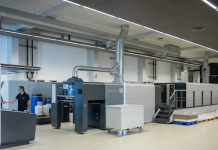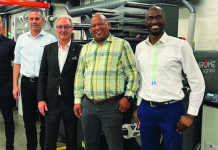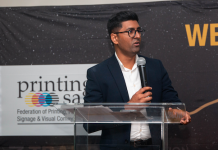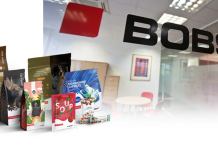Interwaste’s board gave Ricoh the green light for a project that would ultimately cut its costs and 180000 sheets of paper annually from its waste bin manifest process. Chiefly for Interwaste, it gained surety that the automated manifests would all securely work their way back into the system.
Interwaste’s tech-savvy C-level executives could also rest assured that Ricoh had successfully rolled out a similar project for another client in an unrelated industry. The demonstration to board members was conducted in December 2014 and rollout began in March 2015.
There are 5000 monthly manifests, tip tickets and weighbridge bills and every skip bin collected from a customer site and returned for waste management must be linked to a manifest. Interwaste orders 5000 manifests from the printer every month. Manifests consisted of four pages interspaced with carbon paper. Manifests, along with weighbridge bills and tip tickets, are ultimately fed back into operational systems linked to the Microsoft Dynamics NAV ERP system.
The four-sheet carbon copy manifests were previously printed using dot-matrix printers so the impact would create three copies through carbon paper. ‘The problem was that often by the time you get to the fourth page the information was sometimes nearly illegible,’ said Conrad Strydom, Interwaste’s senior IT manager.
Each manifest also cost R1,40. Strydom knew that technology could help but he did not want a bespoke system with the potential for runaway maintenance and redevelopment costs.
Dawie Malan, head of solutions architecture at Ricoh SA outlined the company’s solution that consists of Ricoh’s document composition coupled to digital pen technology. ‘We were able to reduce the manifests from four pages each with carbon copy paper to just one sheet of perforated paper without any carbon copy sheets. That is one minor change that has resulted in a cost saving of 85c per manifest, which ultimately results in a monthly saving of R4250 just in paper costs.’
The Ricoh solution creates the transactional variable manifests and sends them to a customised document workflow. Microsoft Dynamics NAV intercepts the print stream to place pre-selected fields in the correct space that are filled in later in the process. A scanning solution captures information, including weighbridge data, tip ticket and manifest, back into the operational system. And customers now receive a single PDF document of consolidated information.
Phase two of the rollout will include placing the digital pen in the system that will record and capture data at various stages in the process. Information will then be uploaded directly into the operational system once pens are docked.
Phase three will see an OCR capability attached to the scanning component to ensure documents from facilities beyond Interwaste’s control, where there will be no digital pens, can be fed back into the system.
‘This type of environment is the perfect scenario for document composition solution coupled to the capabilities of the digital pen,’ said Malan. ‘Interwaste has vehicles that move between customer, Interwaste and other external sites with highly regulated documentation that is paramount to the profitability and ethical management of the organisation, which Interwaste takes extremely seriously.’





















